Double-Exposure Inspiration
Greg Wickenburg uses the Tamron SP 150-600mm VC G2 and 18-400mm VC HLD lenses to seamlessly merge silhouettes with nature.
As seen in Tamron's Magazine Spring 2019 issue
More Photo Tips | Video Gallery | Photo Gallery | Enewsletter sign-up
By Jenn Gidman
Images by Greg Wickenburg
When Greg Wickenburg was 17, his life changed dramatically: A car accident left him a C5 quadriplegic, paralyzed from the shoulders down, with only partial arm movement and no use of his hands, fingers, waist, or legs. Greg had always enjoyed photography as a spectator, and in the '90s he picked up a film camera in the hopes of launching a new hobby—but having to finagle the camera and other equipment was challenging. "I couldn't hold the camera right, couldn't change the settings myself, couldn't zoom in and out," he says. "It got so frustrating that I eventually just quit."
Flash-forward more than 20 years later, into a time when digital cameras and other technological advances have settled in to the imaging landscape, and Greg saw another opening to jump back into his long-lost passion. "Two years ago in December, I saw a picture of a double exposure online—a photo of a silhouetted face filled in with pink blossoms—and became inspired all over again," he says. "I realized that if I could do the double-exposure process in-camera and not have to mess around with Photoshop too much, this could be my path back into image-making."
That's exactly what Greg has been doing since, creating award-winning double exposures that merge silhouettes with wildlife and nature scenes (you can check out more of his work at www.gregwickenburg.com). "I've been mostly self-taught, and one of the first things I had to do was determine which cameras could do multiple exposures, since they don't all do so," he says. "Once I got my Canon 70D, I went online and watched YouTube videos and tutorials to get up to speed on how to do them. After that, there was a lot of trial and error on my part, because you can't know how to piece the images together correctly until you actually do it yourself—it took a lot of practice on my part."
Early on in his double-exposure adventures, Greg found himself drawn to wildlife, which proves challenging to photograph, and which necessitated lenses that he could adapt to his unique workflow. "I can't change lenses while I'm out there, so I need versatile zooms that allow me to capture a variety of images," he says. "My power wheelchair can sometimes scare wildlife if I get too close, and I've also had instances when my wheelchair has become stuck in mud or gravel, so I need zoom lenses with longer reach so that I don't have to venture too close, or too far off the path."
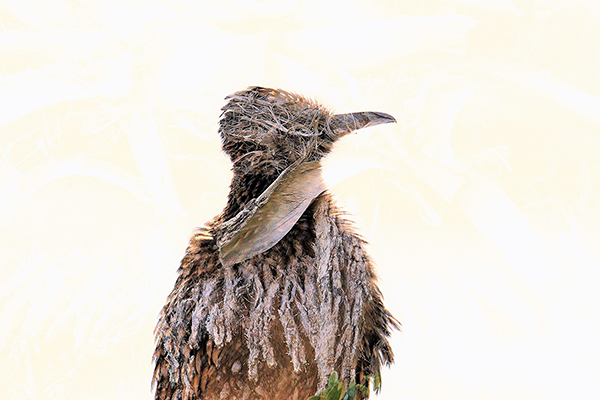
18-400mm (400mm), F/9, 1/400th sec., ISO 1600
Click image to view larger
Greg's two picks from Tamron: the SP 150-600mm VC G2 and the 18-400mm VC HLD. "The 18-400 is by far the lens on my camera most often, due to its terrific range," he says. "I can use it inside my home, in my yard, and when I travel further into my neighborhood. I'll often use that lens to take the first shot of my double exposures, which is typically a silhouette of a person. Then I'll tap into the 150-600 when I go out to take wildlife and nature photos and need a slightly longer reach."
The Vibration Compensation (VC) feature on both lenses is key for Greg's image-making process. "Even though my wheelchair is very heavy and I've got a great arm brace that holds the camera, my wheelchair is on air tires and still wiggles quite a bit," he says. "Without the Vibration Compensation, I'd always have to shoot at a super-high shutter speed. The sharpness I'm able to achieve with these two lenses is incredible."
Greg travels within a 5-mile radius in his Chandler, Arizona, neighborhood to seek out his photographic subjects, sometimes accompanied by his rescue dog, Roo, whom he's trained to be his service dog. "About 3 miles away from my home is a preserve for reclaimed water, but it's also a park of sorts where birds and other wildlife converge," he says. "I like to head out when it's warm out, because I'm often cold. My body has a hard time regulating its own temperature, so when I get really chilly, I'll head out to take pictures."
Greg's shooting setup is aided by two movable arms, attached to his wheelchair, in which he mounts his camera. "I have a Mount'n Mover system, which is an arm with shoulder and elbow parts that both swivel 360 degrees," he says. "I also have an Edelkrone WING, which is made more for panning. It's thicker and stiffer, so it doesn't bounce quite as much as the other arm." Greg uses a stylus to get his camera settings right, then takes his pictures by putting the shutter cable in his mouth and pushing the button with his tongue.
His creations start with an initial silhouette, then a second photo to complement it. "One of my very first photos was one I took of Roo, my Papillon," he says. "Papillon means 'butterfly' in French, so after capturing a silhouette of Roo, I decided I wanted to merge him with a butterfly. That was the first picture I ever sold. Now, whenever I see something that seems to lend itself well to being a silhouette, I take it and hold onto it. Then, when I see another subject with interesting colors or textures, like the palm tree fronds or dead brush, that's the inspiration for my second photo."
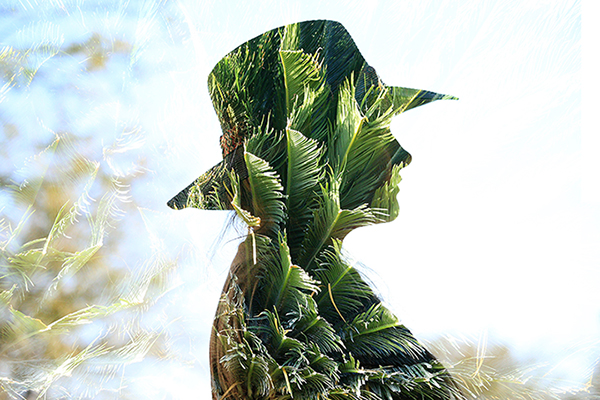
150-600mm (600mm), F/6.3, 1/1000th sec., ISO 800
Click image to view larger
How the process works: Greg puts his camera in "Multiple Exposure" mode, then shoots the first image (or he may have one from a previous session saved on his memory card). "I'll often have silhouettes of my niece or my dog just lying around, waiting for another image I can layer on top of that," he says.
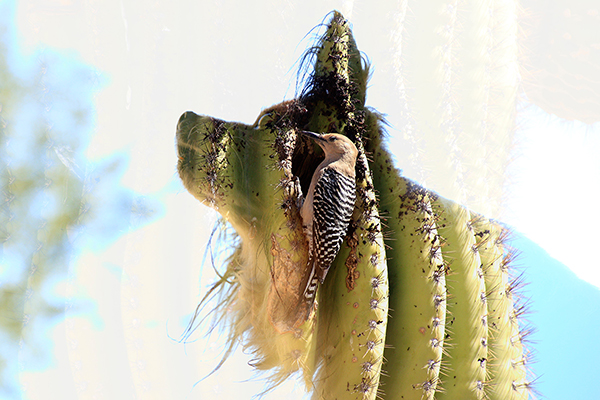
18-400mm (400mm), F/7.1, 1/500th sec., ISO 800
Click image to view larger
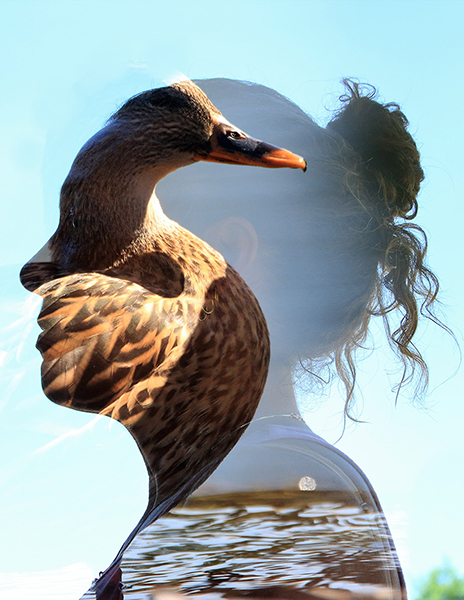
150-600mm (600mm), F/6.3, 1/1600th sec., ISO 800
Click image to view larger
Once he has the first photo in place, and the camera in "Multiple Exposure" mode, that picture shows up as a faint image on his Live View screen. "I simply line that image up with whatever picture I take next," he says. "That second picture only shows up on the dark areas of the first photo, which is why I prefer taking the darker silhouettes first. It makes it easier to fill in that way."
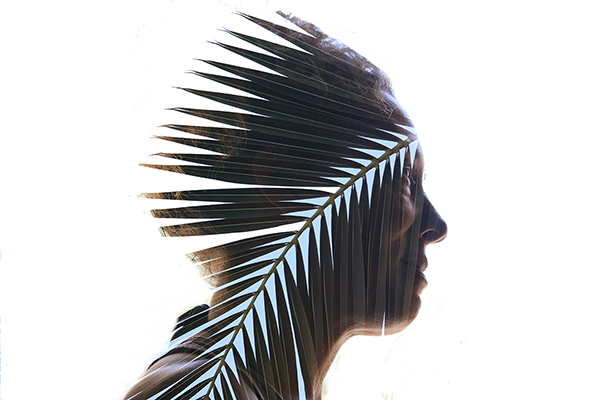
150-600mm (483mm), F/6.3, 1/1000th sec., ISO 400
Click image to view larger
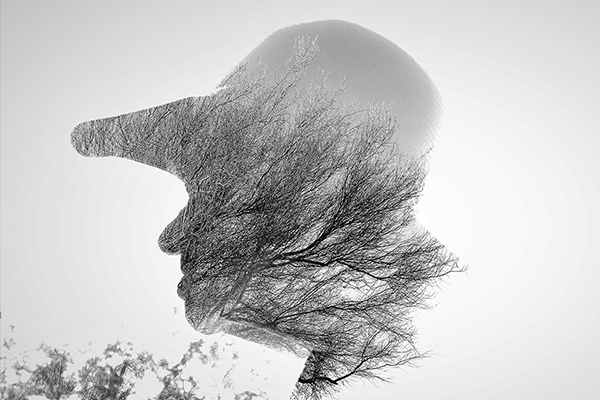
150-600mm (300mm), F/10, 1/640th sec., ISO 800
Click image to view larger
Greg's goal is to capture everything in-camera as much as possible. "I don't do a lot in the computer," he says. "Sometimes I have to do a bit of cropping, and every now and then, I'll have the computer do a color fix, just to brighten the image perhaps, but that's about it."
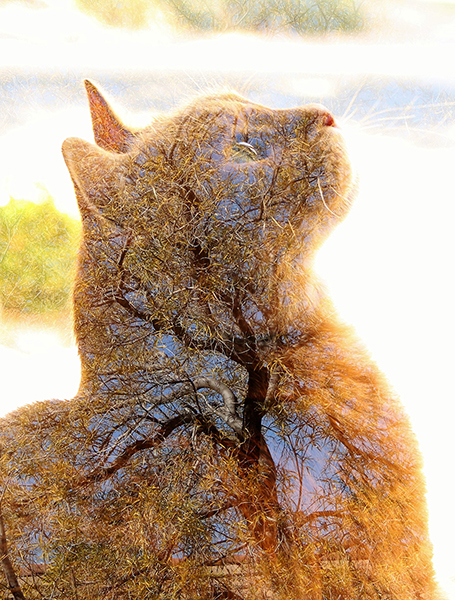
18-400mm (64mm), F/14, 1/1000th sec., ISO 800
Click image to view larger
To see more of Greg's work go to hise website at https://www.gregwickenburg.com/ or follow him on Facebook or Instagram.
More Photo Tips | Watch Videos | Learn More About Tamron Lenses | Photo Gallery
